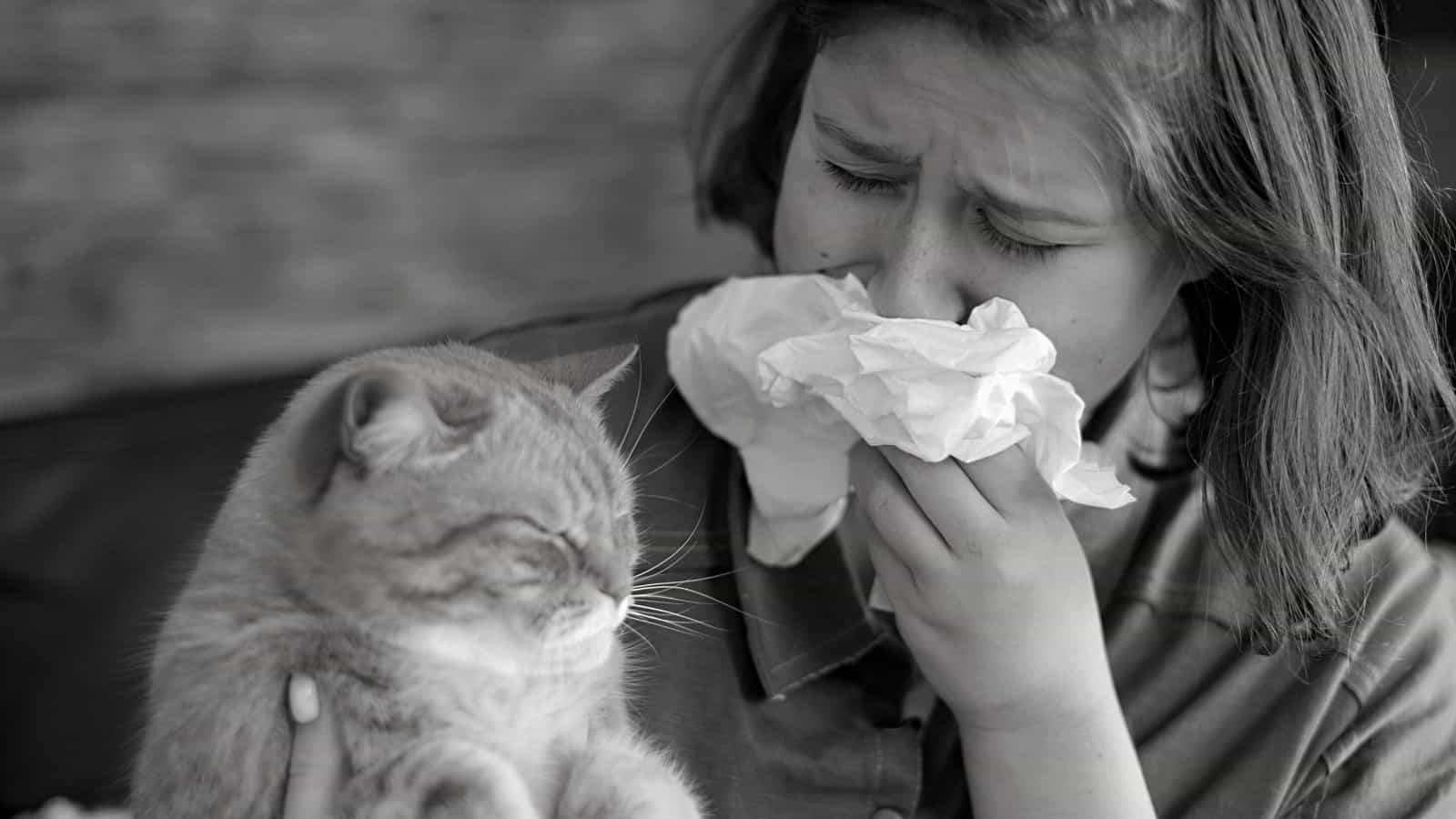European immunologists recently discovered a new cat allergy treatment.
According to the Asthma and Allergy Foundation of America, about twice as many people are allergic to cats as dogs. Researchers believe more people have a cat allergy due to the size and shape of protein molecules on cat skin. Cat allergens stay airborne for longer, making it easier to breathe them in.
In this new study, researchers have successfully regulated the immune system’s response to the main cat allergen Fel d 1. They have found that a specific adjuvant molecule called CpG oligonucleotide can inhibit the immune response to a cat allergy. After studying the molecular mechanisms behind this response, they have suggested immunotherapy to control the allergies. The results were published in the journal Allergy, the official journal of the European Academy of Allergy and Clinical Immunology (EAACI), in December of 2020.
Cat allergies have been on the rise for decades due to oversensitivity to specific cat allergens, mainly Fel d 1. This protein is found in a cat’s saliva, glands, skin, and fur. Cat allergy symptoms can range from mild to severe reactions characterized by rhinitis and asthma. An allergic response may even lead to death in rare cases.
Certain medications can treat a mild cat allergy. However, researchers have found that only allergen-specific immunotherapy (AIT) will work in severe cases. For people with extreme reactions, immunotherapy provides a more effective, permanent option. AIT involves subcutaneous injections of progressively increasing doses of the cat allergen until lasting immune tolerance occurs.
However, researchers still need to make adjustments to cat AIT to ensure safety and effectiveness. The team from the Department of Infection and Immunity of the Luxembourg Institute of Health (LIH) has made headway.
How immunotherapy could successfully treat a cat allergy
They believe that optimizing the immune system T- and B-cells response through adjuvant molecules holds the key to treating feline allergies. This would trigger the production of antibodies against the cat allergens while reducing inflammatory reactions. Therefore, the immune system would gain tolerance to a cat allergy.
“We sought to explore new means of increasing the anti-inflammatory activity of AIT with the known immunomodulatory adjuvant CpG, but at a higher safe dose than previously used for this type of therapy,” explains Dr. Cathy Léonard, a scientist within the Allergy and Clinical Immunology research group at the LIH Department of Infection and Immunity. She also was co-corresponding first author of the study.
The team used mice with a cat allergy to observe the effects of injecting them with the cat allergen. Along with the Fel d 1, they also injected them with a high dose of CpG adjuvant. For the study, they tested the mice in both the presence and absence of AIT.
The scientists found that the allergic mice treated with AIT had better lung resistance, similar to that of the control group. They also observed reduced airway inflammation and hypersensitivity in immune reactions.
Antibodies and immune cells determine the severity of allergic reactions to cats.
Furthermore, when analyzing the Fel d 1 antibodies specifically, they found that the AIT-treated allergic mice had lower IgE levels. This antibody is a hallmark of allergic reactions. This group of mice also showed higher levels of IgA and IgG, which help to lower inflammation. Finally, the mice treated with immunotherapy had reduced levels of pro-allergic cytokine molecules compared to untreated mice.
Also, the immunologists discovered an increase in the number of immune cell types in the treated mice’s tissues. These immune cells played a considerable role in allergy regulation and tolerance and included:
- plasmacytoid dendritic cells (pDCs);
- Natural Killer cells (NKs);
- regulatory T cells (T-regs) and;
- regulatory B cells (B-regs).
These cells expressed more of the Tumour Necrosis Factor alpha (TNF-α) receptor 2 (TNFR-2). NK cells also produced the TNF-α cytokine. These cell types help to inhibit the allergen-specific immune response, which therefore aids in suppressing sensitivity to allergens.
“At a later stage, we observed a clear increase of TNF-α in the lungs. Interestingly, AIT also triggered the appearance of a novel and unique type of Tregs, known as biTregs, which is even better equipped to counterbalance the allergic and inflammatory reaction in response to the antigen,” adds Dr. Léonard.
Final thoughts: Allergen-specific immunotherapy can successfully treat a cat allergy
This study shows how AIT, along with high doses of CpG adjuvant, can successfully treat a feline allergy. However, the team found that the mechanism behind the treatment varies. The researchers observed differences between mice that previously had exposure to the Fel d 1 antigen and those that hadn’t. They hope that new allergy vaccines using CpG adjuvant will be created by discovering these alternative pathways for treatments.
In this study, the team injected the treatment subcutaneously instead of opting for the more invasive intraperitoneal (abdominal cavity) route. The results proved that this method is just as effective in treating a cat allergy.
“In essence, we propose a pre-clinical model of AIT for cat allergy, which mimics the conditions required for human AIT clinical trials and which is already optimized for future use in translational studies. Indeed, our study presents several novelties, including the use of endotoxin-free Fel d 1 allergen, which is mandatory in the clinical setting, to prevent the onset of collateral inflammatory responses, which could compromise the desired induction of the tolerance-promoting mechanisms.”
“Moreover, we show for the first time that the use of the maximum dose of CpG tolerated in humans has the ability to modulate the allergic response when combined with Fel d 1 allergen, with very favorable safety profiles and through a well-established and medically-approved delivery mode. Based on our data, we believe that CpG deserves reconsideration as an effective AIT adjuvant in humans and that our work sets the bases for the development of novel successful immunotherapeutic treatments for allergies,” concludes Prof Markus Ollert, Director of the LIH Department of Infection and Immunity and senior lead author of the study.















 Community
Community

